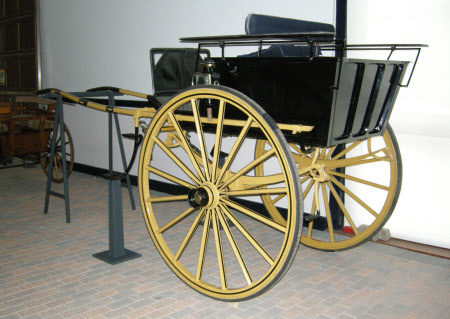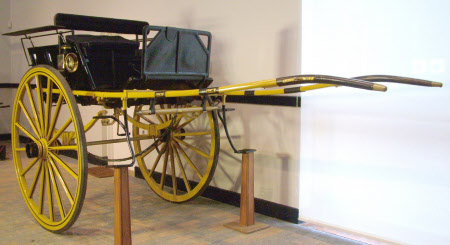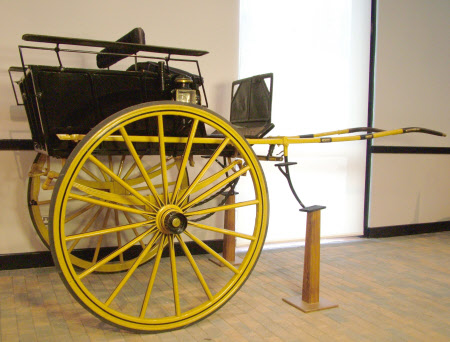Whitechapel cart
Linington of Portsmouth
Category
Carriages & other vehicles
Date
1890
Materials
Painted wood body with wool cloth upholstery and two iron shod wheels.
Measurements
190.5 x 190.5 x 169.5cm (6ft 3in x 6ft 3in x 5ft 6 1/2in)
Place of origin
Portsmouth
Order this imageCollection
National Trust Carriage Museum
NT 272880.1
Caption
The Whitechapel was a variant of the Dog Cart; it was made popular by King Edward VII who favoured this fast and versatile carriage as a smart sporting and hunting vehicle. All two-wheeled carriages with this arrangement need to have a sliding front seat, to adjust the balance depending on the number, position and weight of the people carried. In this case there is a crank handle which can be wound to move the front seat forwards or backwards.
Summary
Whitechapel Cart built by Linington of Portsmouth circa 1890. Whitechapel Cart (two wheels) for a single horse. This carriage is sprung on leaf springs and has shafts and a swingle tree. There are two candle lamps. The interior trim is in dark blue with two cushions. Painted in yellow and black livery with lining in black.
Full description
The Whitechapel cart is a dog cart variant identified by the panelled sides and back. The tail board can be hinged down to act as a footboard for two passengers facing backwards, as well as the driver and passenger facing forward. All two-wheeled carriages with this arrangement need to have a sliding front seat, to adjust the balance depending on the number, position and weight of the people carried. In this case there is a crank handle which can be wound to move the front seat forwards or backwards. Bright yellow and black paintwork is typical for a sporting carriage. This example, built by Linington of Portsmouth, probably in the late 1800s, was used in recent years for driving tandem by Sir Dymoke White, one of the finest amateur whips of his day. Tandem driving is when two horses are driven one in front of the other, a pair being driven side by side. The springs are on deep blocks and they have more compass (carriage terminology for curvature) than usual to raise the body for better control and vision when tandem driving.
Marks and inscriptions
On front nearside axle cap.: LININGTON PORTSMOUTH On front offside axle cap.: LININGTON PORTSMOUTH On rear nearside axle cap.: LININGTON PORTSMOUTH On rear offside axle cap.: LININGTON PORTSMOUTH On front nearside axle component. : N JOSH RICHARDS & COMPY SPRING HILL WORKS On front offside axle component. : N JOSH RICHARDS & COMPY SPRING HILL WORKS On rear nearside axle component. : N JOSH RICHARDS & COMPY SPRING HILL WORKS On front offside axle component.: N JOSH RICHARDS & COMPY SPRING HILL WORKS
Makers and roles
Linington of Portsmouth , coach builder


